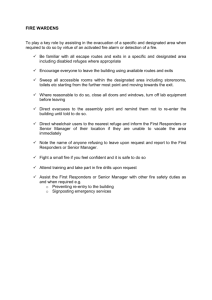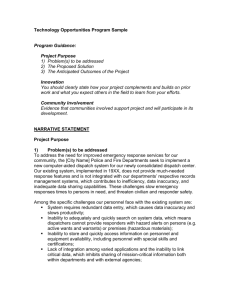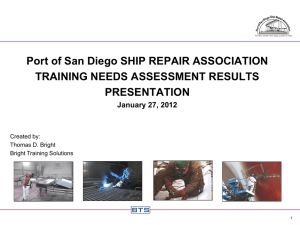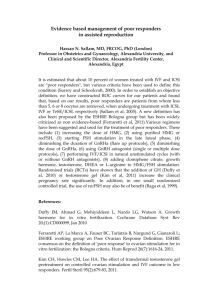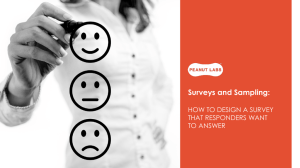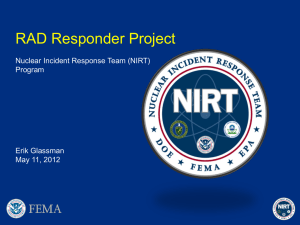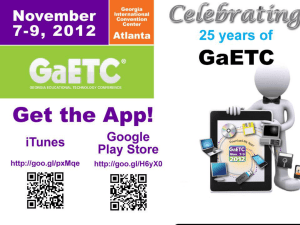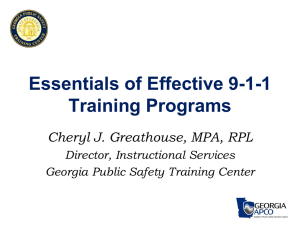HMCBRNE_TC_RRT_Presentation_2012
advertisement
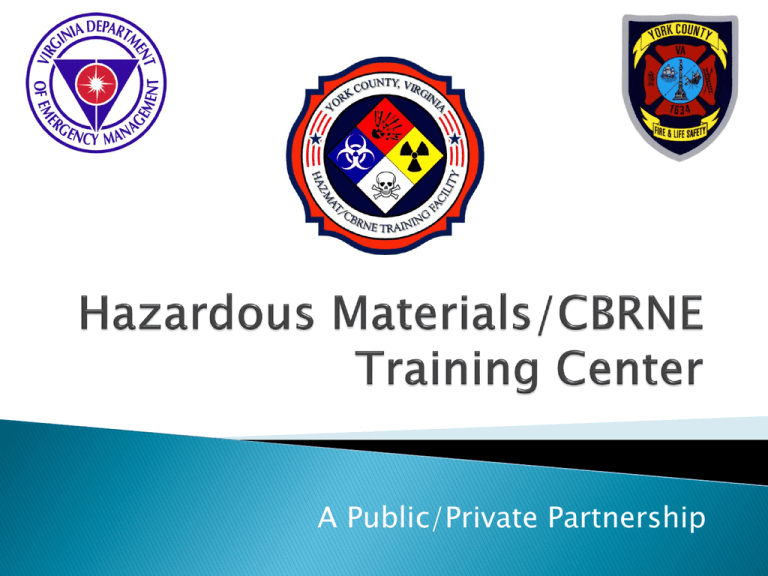
A Public/Private Partnership Project began in 2005 after an assessment of then-current training capabilities and future anticipated needs. Several sites around the Commonwealth were considered. Southeast Virginia was identified as best meeting the needs for a statewide advanced hazardous materials training facility. Formed a partnership with the County of York to develop a joint facility. In January 2010, began construction on an approximately 8-acre site within the County of York. Site is adjacent to an existing fire station that is landlocked by industry. Today, facility is approximately 80% complete. While additions and changes to design are still occurring, development has shifted focus to the set up of simulators and enhancement of capabilities. To deliver comprehensive, integrated emergency response training to protect the public from the debilitating effects of hazardous materials and CBRNE incidents. To enhance the capabilities of emergency responders by providing them a safe, stateof-the-art facility where they have opportunities to work in situations relevant to today’s emergency response community. Facility was designed to deliver hazardous materials/CBRNE emergency response training. Facility and its proximity to marine and industrial facilities allows for a broad range of training opportunities. Facility was built as a state-of-the-art training environment. There are many different training environments at the HM/CBRNE facility, including: ◦ Indoor classrooms ◦ Outdoor classrooms ◦ Practical training stations Delivery of lecture activities for 24 students. Technology incorporated in the rehabilitation of the classroom to include… ◦ Wireless data reception – allows students ability to access the Internet for research activities. ◦ Smart media integration – allows the capture of data on board for review. Provides weather protection for outdoor activities or lectures. Portable bleachers or tables allow for a variety of activities such as… ◦ Laboratory experiments ◦ Damage assessment ◦ Skills sets that may not be conducive to indoor environments All necessary utilities for outdoor activities are provided at each station. ◦ Utilities were placed underground to prevent trip hazards, reduce ancillary equipment, and to facilitate easier set up. ◦ Electricity, water, compressed air, and liquefied compressed gases can be controlled at the individual stations. ◦ All utility sources are removed from the training area to limit disruption from noise or maintenance servicing. Six major work areas designed to allow students the opportunity to recognize situations and to practice and demonstrate advanced control skills. ◦ ◦ ◦ ◦ ◦ ◦ Highway container simulators Rail emergency simulators Intermodal container simulators Low-pressure/High-pressure liquid leak Compressed gas/Liquefied compressed gas Illicit laboratories Allows the responder to work with currently authorized DOT-specification containers. Equipment is representative of what the responder sees “on the streets.” Each simulator is engineered with multiple leaks common for that type construction that the responder must repair. Rail containers pose unusual challenges for emergency responders. Representative equipment on site allows the responders to see the different hazards of motive power units, general service cars, and highpressure cars. Emphasis is placed on assessing construction, understanding hazards, and mitigating releases from bulk containers (even a locomotive). The Intermodal Association of North America (IANA) states that approximately 25 million intermodal shipments occur each year; it is the fastest-growing mode of transportation. Simulators allow responders to view different types of construction and equipment arrangements. Responders have opportunity to practice advanced control skills such as transfer operations and working with ISO/IMO-type containers. Allows the responder to utilize leak control techniques for both low-pressure and highpressure applications. Responders learn how to control leaks from different types of piping and pipe appliances. Responders have opportunity to use commercially available kits as well as learning to be creative with the equipment they currently possess. Using flammable and toxic compressed gas/liquefied compressed gas storage cylinders, responders address: ◦ Container design, piping, and control considerations ◦ Container behavior during emergency conditions ◦ Temporary container repair and product transfer operations Allows the responder to see “functional” laboratory environments for different types of illicit labs: ◦ ◦ ◦ ◦ ◦ ◦ Clandestine drug labs Illicit biological labs Chemical warfare agent production labs Improvised explosives labs Toxin extraction labs Radiological dispersal device labs Responders compare lab-grade equipment and processes to “backyard chemist” equipment and how to manage the different types of processes. On-site CCTV system to record responders’ actions during activities Upgraded field instrumentation Wireless instrumentation that behaves similar to “real-life” instruments Integrated use of fire service technologies In-suit communications Real-time weather input with plume data “Working” simulators The facility has been a great opportunity to explore public/private partnerships. VDEM and its partners all work towards the facility’s goal. Without a partnership, it would have been extremely difficult to develop this site with existing resources. The facility is always adapting to meet the new challenges facing emergency responders. Thomas C. Jordan HM Training and Development Coordinator Virginia Dept of Emergency Management 10501 Trade Court Richmond, Virginia 23236 tom.jordan@vdem.virginia.gov (804) 380-8492
